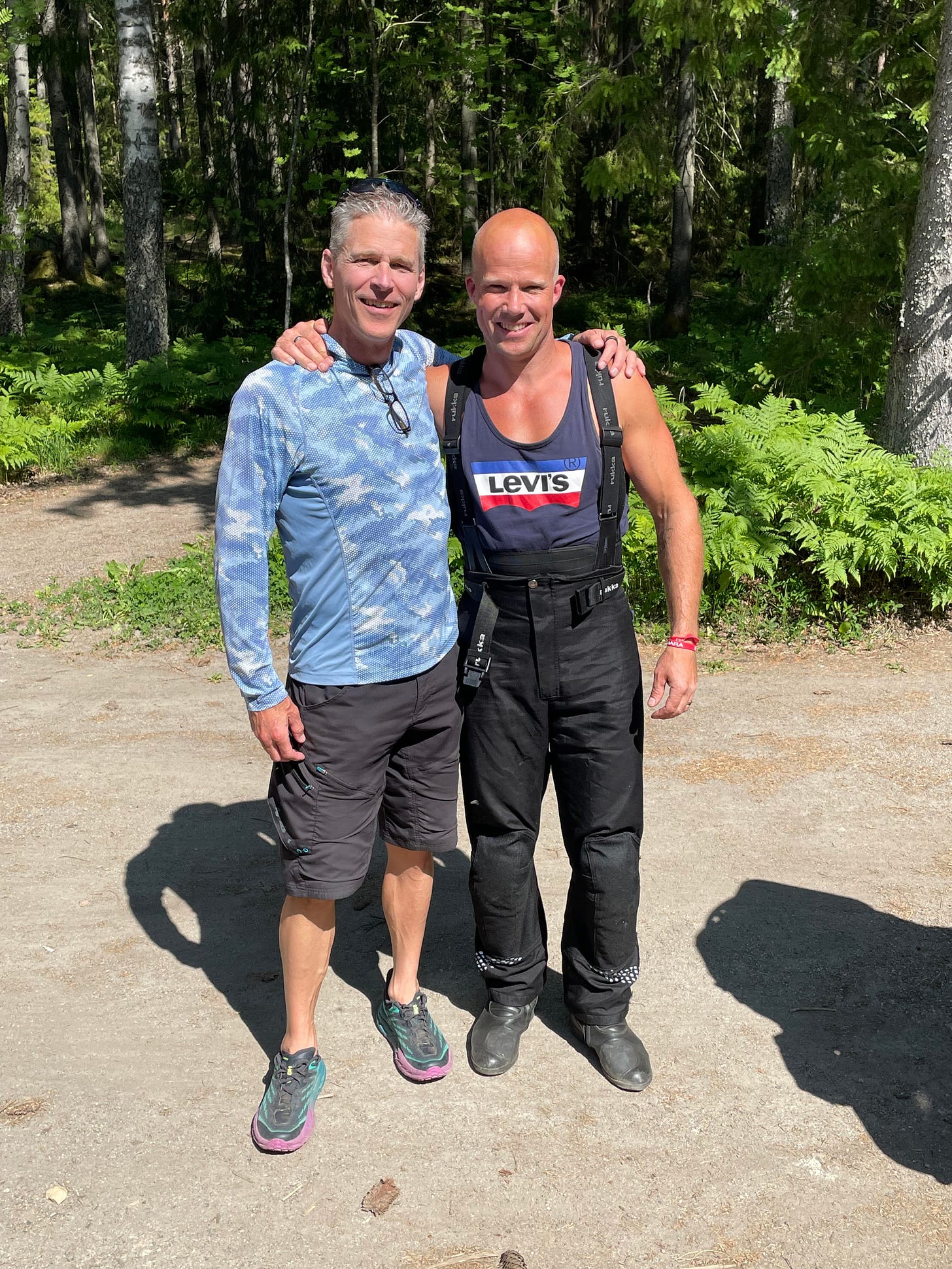
This article is about narrowing the gap between what we say, and what we do (the say-do gap).
We’re also going to explore exercises for making it obvious when our goals are conflicting with the reality of our life situation.
Finally, we’ll end with techniques for surfacing, then managing, fears.
As you work through the exercises, remember:
No Wrong Answers - write down as many different ideas as come to mind.
Look For Themes - certain ideas will repeat and point towards core values.
Save Your Work - get a bound journal, date your entries, refer back at the end of the season.
Reflect Over Time - successes, setbacks, failures - is the journey what you expected?
The techniques (below) are an iterative process. As you stack these reviews over time, you’ll learn about yourself, your values and your motivations.1
Finding Our Why
Doing this review properly takes time. It's time well spent and often overlooked by many of your competitors.
Start by writing a list of your reasons for signing up for your target race.
Next write a list of your life priorities.
Finally, write a list of your goals for the race.
Life priorities were deliberately put in the middle and race goals last.
Why Race?
My Life Priorities
My Race Goals
Eight words above.
Don’t be fooled by the simplicity of presentation.
Your likelihood of success, and enjoyment of the thousands of hours you’ll spend on your Endurance Journey, depend on getting these three categories aligned.
My Reason For Racing
Where I Want To Take My Larger Life
My Race Goals
Do not let an arbitrary race goal distract you from working towards success in your larger life.
The big win is the life you create through sport.
Thousands of Hours
Season Review
Set aside a weekend, or week, where you…
Unplug
Avoid Screens
Journal Without Judgement
I schedule these periods and do a “couples retreat” with my wife. We review at the family, marriage and individual level.
We lay out:
Season Structure
Training Camps
Weekly Time Commitment
Basic Week Structure
All Other Travel Requirements
Expectations For Non-Training Contributions
The idea being:
No Surprises
Clear Expectations For Fatigue Management
Reality Check On Ambition
No Surprises => Get everyone on board. Being reluctant to explain the commitment required is a clear sign you’re going to have trouble with execution.
Fatigue Management => Be grateful for constraints, they keep us from overdoing it. Regardless of Athlete Type, it is your job to keep your life on track.
Ambition => Think Big, Progress Gradually.
Get this wrong and you will drain the energy out of your relationships and non-training life.2
Get this right and training sits in harmony with your life.
Harmony Speeds Adaptations
Surprises - Fatigue - Ambition
As You Prepare
Take a page of your journal and split it into two columns:
Issue
Solution
As you move through your program, issues will arise:
Concerns
Injuries
Setbacks
Training Errors
Fears
Write everything down. Make all of these issues real.
You will discover many “issues” are minor and easily addressed.
Other issues may be more complicated.
Some issues will have no solution other than “accept this might happen.”
Gather solutions from experienced athletes and coaches. Test, and train, each of the solutions.
Retrain your thinking patterns to support your goals.
Start with your spoken and written word.
Extend to your actions.
Notice small wins.
I call this technique Cultivating Winner’s Mindset. The link is to my other publication, True Wealth.
Let’s summarize:
Know Your Why
Discuss & Align Your Why
Surface Fears, Concerns & Roadblocks
Get Your Mind Focused On Small Wins
Next up, applying this process to the specifics of your target race.
Back To Table of Contents
These same techniques can be used in our wider lives.
You will have many warning signs when your stress load is too high. Heed them. Athletic performance is a long-term game.



